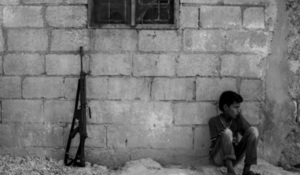Reintegrating the Radicalized: Challenges, Lessons Learned, and How to Overcome Barriers

“Reintegrating the Radicalized: Challenges, Lessons Learned, and How to Overcome Barriers“
Authors | Editors: Pagano, S. (NSI, Inc.); Aviles, W. (NSI, Inc.)
NSI Reachback Report Preview
Defining Reintegration and Distinguishing Related Terms
We begin by defining reintegration and distinguishing it from other concepts with which it is sometimes conflated. Reintegration is often discussed in the context of disengagement, demobilization, deradicalization, the related literature, which leads to ambiguity regarding their conceptual boundaries (Crowell, 2017; Horgan, 2008; Monahan, 2012; Marsden, 2015). For the purposes of this discussion, we define reintegration as a process by which ex-combatants or associates assume functional roles in society. This conceptualization can be contrasted with disengagement, which involves a literal movement away from violence; demobilization, which is the process of discharging individuals from their roles as active combatants in armed forces or groups; and deradicalization, which refers to a cognitive shift away from supporting violence as a means for achieving desired goals. Like deradicalization, reconciliation refers to a primarily psychological process that involves healing relationships and creating acceptance for ex-combatants in society. While the “fully realized product” of reintegration is social rehabilitation of former combatants (Schulhofer-Wohl & Sambanis, 2010), “the fully realized product of reconciliation is the achievement of a sustainable peace, including the cessation of violence” (Kuznar, Stevenson, & Pagano, 2018).
In order to successfully execute reintegration and reconciliation (R&R), it is important to understand how R&R fit within an overarching framework for peace. While R&R are the terminal phases of the conflict resolution process and are crucial for an enduring peace, the process may also include disengagement, deradicalization, and counter-radicalization. R&R can occur without deradicalization or where deradicalization is executed at the same time as R&R. Of course, successful R&R is more likely to be achieved if combatants have foregone violence and undergone a psychological shift away from their militant motivations. We provide an overview of these terms and their relationships to one another in Figure 1 [in the report].
Deriving Lessons for Conducting Successful Reintegration and Reconciliation
At the outset, it is important to acknowledge the considerable challenges associated with deriving general lessons for conducting successful R&R. First, there is no single approach to R&R; instead, there are many variations in how programs are structured, the fundamental assumptions driving different approaches, program components, and how the program components are implemented. Second, the empirical evidence base is both narrow and based largely on Western populations, limiting the degree to which findings can be confidently generalized (Marsden, 2019). Third, reintegration and reconciliation processes are extremely context dependent (Marsden, 2019; Moghaddam, 2019). Political, cultural, socio-economic, historical, psychological, and ethnic variables relevant to each conflict can all mold the success or failure of R&R programs. Physical, social, criminal justice, and conflict contexts also influence individual and group motivations to engage in R&R processes as well as which opportunities even exist for reintegration (Marsden, 2019). Despite these limitations, however, there are some emergent themes and insights from R&R in other areas of the world that may be applicable to the USCENTCOM area of responsibility (AOR). We begin with a discussion of the conditions and components required for successful reintegration, continue with a discussion on reconciliation, and conclude by considering the barriers to reintegration and how the United States and international community might respond in order to overcome those barriers.
Download Publication
Comments